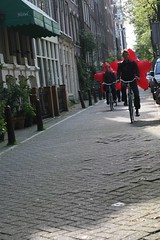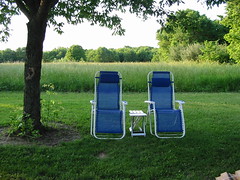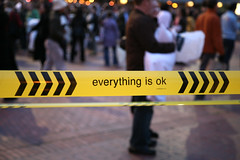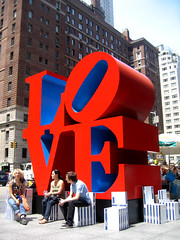- DIY spacemaking
- Vending Machine/ Coin Operated/ Franchised Spacemaking devices
- Permanent Flexible Infrastructures
1. DIY spacemaking
DIY spacemaking is typified by the efforts of individual street users which utilize a set of affordable tools for customizing their environment to accommodate a certain behavior, like skateboarding.
The picnic basket and blanket are familiar tools for customizing an outdoor environment
Camping chairs are another good example of customizing an outdoor environment.
To add to this, we also consider the emergent phenomenon of urban play. A great example of this is the public pillow fight that takes place in San Francisco and around the world on Valentines Day.
IMG_0951
Originally uploaded by urban_data
The Postal Chairs project by GRL embodies all of the best principles of DIY spacemaking.Originally uploaded by urban_data
See the video: http://graffitiresearchlab.com/?page_id=35
And then there is the absurdly functional work of Sarah Ross: Archisuit consists of an edition of four leisure jogging suits made for specific architectural structures in Los Angeles. The suits include the negative space of the structures and allow a wearer to fit into, or onto, structures designed to deny them.

http://www.insecurespaces.net/archisuits.html#
Rebar's contribution to this equation is Bushwaffle: our prototype
personal space softening device.

















